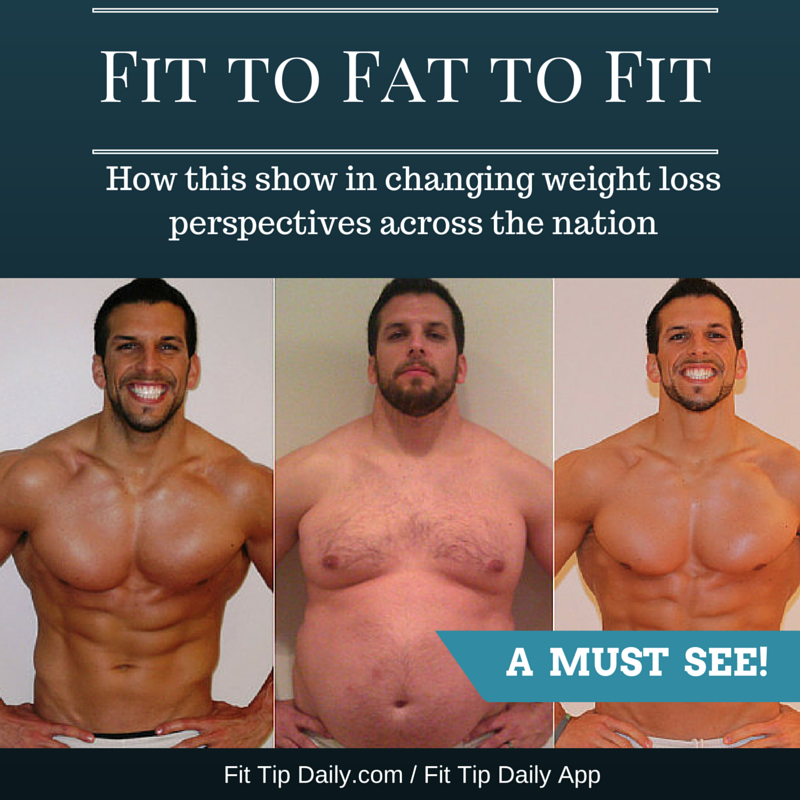The Ultimate Guide To Fit To Fat To Fit: Risks, Benefits, And Sustainability
Fit To Fat To Fit Where Are refers to a recent weight-related trend where individuals lose significant weight, intentionally gain it back, and then lose weight once again.
The reasons for this unusual practice vary widely and can include improving health, resolving eating disorders, and preparing for weight loss competitions. Historically, this approach was popularized by bodybuilders who aimed to gain muscle mass while minimizing fat, using a technique known as "bulking" and "cutting."
In this article, we will delve into the complexities of this weight-cycling phenomenon, examining the associated health risks, psychological implications, and ethical considerations.
Fit To Fat To Fit Where Are
Understanding the essential aspects of "Fit To Fat To Fit Where Are" is crucial for comprehending this weight-cycling phenomenon. These aspects encompass its physical, psychological, and ethical dimensions.
- Health Risks
- Psychological Implications
- Ethical Considerations
- Bodybuilding
- Eating Disorders
- Weight Loss Competitions
- Bulking and Cutting
- Sustainability
These aspects are interconnected and influence each other. For instance, the health risks associated with weight cycling can impact psychological well-being, leading to a negative body image and disordered eating patterns. Understanding these connections is essential for developing informed opinions and making responsible decisions about weight management.
Health Risks
Understanding the health risks associated with "Fit To Fat To Fit Where Are" is paramount. Weight cycling can lead to a myriad of adverse effects on physical and mental health.
- Natalie Portman Nude
- Frankie Valli Net Worth 2024 How Much
- Who Is Nia Jax Dating Now Past Relationships
- Cardiovascular Disease
Rapid weight gain and loss can strain the heart, increasing the risk of heart disease, high blood pressure, and stroke.
- Metabolic Syndrome
Weight cycling can disrupt metabolism, leading to insulin resistance, type 2 diabetes, and fatty liver disease.
- Muscle Loss
Rapid weight loss can result in muscle loss, reducing strength, mobility, and overall physical function.
- Eating Disorders
Weight cycling can trigger or exacerbate eating disorders, such as anorexia nervosa and bulimia nervosa.
These health risks highlight the potential dangers of intentional weight cycling. Individuals considering this practice should carefully weigh the risks and benefits and consult with a healthcare professional.
Psychological Implications
Understanding the psychological implications of "Fit To Fat To Fit Where Are" is crucial for gaining a comprehensive perspective on this weight-cycling phenomenon.
- Body Image Distortion
Weight cycling can lead to a distorted body image, making individuals overly focused on their weight and appearance, potentially leading to low self-esteem and eating disorders.
- Mood Swings
Rapid weight changes can affect hormone levels, resulting in mood swings, irritability, and difficulty concentrating.
- Eating Disorders
Weight cycling can trigger or exacerbate eating disorders, as individuals may become obsessed with controlling their weight and body size.
- Social Isolation
The social stigma surrounding weight gain and weight loss can lead to social isolation and withdrawal from social activities.
These psychological implications underscore the complex relationship between weight cycling and mental well-being. It is crucial for individuals considering "Fit To Fat To Fit Where Are" to be aware of these potential psychological consequences and to seek professional support if needed.
Ethical Considerations
Understanding the ethical considerations surrounding "Fit To Fat To Fit Where Are" is paramount. Ethical concerns arise due to the potential risks and consequences associated with intentional weight cycling.
Firstly, the practice raises questions about informed consent and autonomy. Individuals engaging in "Fit To Fat To Fit Where Are" should be fully aware of the potential health and psychological risks involved and should make informed decisions based on this knowledge. Healthcare professionals have an ethical obligation to provide accurate information and guidance to ensure individuals can make informed choices.
Secondly, the practice may perpetuate disordered eating patterns and body dissatisfaction. Weight cycling can reinforce a harmful focus on body weight and appearance, potentially leading to eating disorders and negative body image. It is essential to promote a healthy body image and discourage practices that could contribute to body dissatisfaction.
In conclusion, ethical considerations are crucial in "Fit To Fat To Fit Where Are." Healthcare professionals, fitness experts, and individuals considering this practice must carefully weigh the potential risks and benefits, prioritize informed consent, and promote healthy body image.
Bodybuilding
Bodybuilding, a significant component of "Fit To Fat To Fit Where Are," involves gaining muscle mass and reducing body fat to achieve a specific physique. It entails rigorous training, specialized nutrition, and often, the use of performance-enhancing substances.
- Bulking
Bodybuilders intentionally gain weight, primarily in the form of muscle, by consuming a high-calorie diet and engaging in intense weightlifting.
- Cutting
After bulking, bodybuilders reduce their calorie intake and increase cardiovascular exercise to lose fat and reveal the underlying muscle mass.
- Supplements
Bodybuilders may use supplements, such as protein powders, creatine, and anabolic steroids, to enhance muscle growth and recovery.
- Competition
Some bodybuilders participate in competitions where they are judged on their muscularity, symmetry, and overall physique.
Bodybuilding within "Fit To Fat To Fit Where Are" raises concerns about the potential health risks associated with extreme weight cycling, disordered eating patterns, and the use of performance-enhancing drugs. It is crucial for bodybuilders to prioritize their health and well-being, carefully consider the risks and benefits, and seek professional guidance when necessary.
Eating Disorders
Eating disorders are a crucial aspect of "Fit To Fat To Fit Where Are," as they pose significant risks to physical and mental health. Individuals with eating disorders often engage in extreme weight-cycling behaviors, which can lead to severe health consequences.
- Anorexia Nervosa
Anorexia is characterized by an intense fear of gaining weight, leading to severe calorie restriction, excessive exercise, and body image distortion.
- Bulimia Nervosa
Bulimia involves binge eating followed by purging behaviors, such as vomiting, laxative abuse, or excessive exercise, to prevent weight gain.
- Binge Eating Disorder
Individuals with binge eating disorder experience recurrent episodes of uncontrolled eating, consuming large amounts of food in a short period.
- Other Specified Feeding or Eating Disorder (OSFED)
OSFED is a category for eating disorders that do not meet the full criteria for anorexia, bulimia, or binge eating disorder but still cause significant distress and impairment.
Eating disorders in "Fit To Fat To Fit Where Are" can be triggered by the desire to lose weight quickly or to gain muscle mass rapidly. These disorders can lead to malnutrition, electrolyte imbalances, gastrointestinal problems, and even death. It is crucial for individuals to seek professional help if they suspect they have an eating disorder.
Weight Loss Competitions
Within the realm of "Fit To Fat To Fit Where Are," weight loss competitions have emerged as a significant phenomenon, attracting individuals seeking rapid weight loss and often substantial monetary rewards.
- Prizes and Incentives
Competitors are motivated by cash prizes, sponsorships, and public recognition, potentially leading to extreme and unsustainable weight loss practices.
- Time-Limited Challenges
Weight loss competitions typically impose strict timeframes, often ranging from a few weeks to several months, pressuring participants to shed pounds quickly.
- Elimination Format
Some competitions adopt an elimination format, adding an element of competition and social pressure that can further intensify weight loss efforts.
- Health Concerns
Rapid weight loss can pose health risks, including muscle loss, nutrient deficiencies, and metabolic disruptions, which may be exacerbated in the context of competitions.
Weight loss competitions within "Fit To Fat To Fit Where Are" raise questions about the ethics of promoting rapid weight loss, the potential for disordered eating, and the long-term health implications for participants. Understanding these facets is crucial for evaluating the risks and benefits associated with such competitions.
Bulking and Cutting
Understanding the relationship between "Bulking and Cutting" and "Fit To Fat To Fit Where Are" is crucial for comprehending this weight-cycling phenomenon. Bulking and cutting are two distinct phases commonly employed within "Fit To Fat To Fit Where Are." Bulking involves intentionally gaining weight, primarily in the form of muscle, through high-calorie consumption and intensive weightlifting. This phase aims to maximize muscle growth and strength.
Cutting, on the other hand, is a subsequent phase where individuals reduce their calorie intake and increase cardiovascular exercise to lose fat and reveal the underlying muscle mass gained during bulking. This process enhances muscular definition and vascularity, resulting in a leaner and more toned physique.
Bulking and cutting are integral components of "Fit To Fat To Fit Where Are," as they allow individuals to gain muscle mass while minimizing fat accumulation. Real-life examples include bodybuilders who undergo bulking and cutting cycles to prepare for competitions. However, it is essential to note that while bulking and cutting can be effective for certain fitness goals, they should be approached cautiously and under the guidance of qualified professionals to mitigate potential health risks.
Understanding the cause and effect relationship between bulking and cutting and "Fit To Fat To Fit Where Are" enables individuals to make informed decisions about their weight management strategies. It emphasizes the importance of balancing muscle growth with fat loss to achieve desired fitness outcomes safely and effectively.
Sustainability
Exploring the connection between "Sustainability" and "Fit To Fat To Fit Where Are" unveils a complex relationship that hinges on the long-term health implications of repeated weight cycling. "Sustainability" in this context refers to the ability to maintain a healthy weight and lifestyle over time, while "Fit To Fat To Fit Where Are" represents the practice of intentionally gaining and losing weight in cycles. Understanding the cause and effect between these two concepts is crucial for navigating the potential risks and benefits associated with weight-cycling practices.
While "Sustainability" is not a critical component of "Fit To Fat To Fit Where Are," it serves as a guiding principle for individuals engaging in this practice. By prioritizing sustainable weight management strategies, individuals can mitigate the health risks associated with rapid weight gain and loss. Real-life examples of "Sustainability" within "Fit To Fat To Fit Where Are" include gradual weight loss through balanced nutrition and regular exercise, as opposed to crash diets or extreme calorie restriction. Understanding the practical applications of this connection empowers individuals to make informed choices about their weight management journey.
In conclusion, while "Fit To Fat To Fit Where Are" may serve specific fitness goals, it is essential to prioritize "Sustainability" to ensure long-term health and well-being. By adopting sustainable weight management practices, individuals can avoid the potential health risks associated with rapid weight cycling and maintain a healthy weight and lifestyle over time. This understanding underscores the importance of seeking professional guidance and adopting a holistic approach to weight management.
In conclusion, our exploration of "Fit To Fat To Fit Where Are" has illuminated the complexities of intentional weight cycling, revealing both its potential benefits and associated risks. Key insights include the understanding that "Fit To Fat To Fit Where Are" encompasses a range of motivations, from bodybuilding to eating disorder recovery. While it can facilitate muscle growth and weight loss, it is crucial to proceed with caution and prioritize health and sustainability.
The interconnections between the various aspects of "Fit To Fat To Fit Where Are" cannot be overstated. Health risks, psychological implications, and ethical considerations are intertwined, highlighting the need for a holistic approach to weight management. Understanding the potential consequences of rapid weight cycling empowers individuals to make informed decisions about their bodies and well-being.
As we continue to unravel the intricacies of "Fit To Fat To Fit Where Are," future research and discussions should focus on developing sustainable and healthy weight management strategies that prioritize long-term well-being. By embracing a nuanced understanding of this phenomenon, we can promote a healthier and more balanced approach to weight management, one that emphasizes both physical and mental health.

"Fit to Fat to Fit" the TV Show That Changing Perspectives Fit Tip Daily

Watch Fit to Fat to Fit Full Episodes, Video & More A&E

Personal Trainer Discusses His Weight Loss Journey on ‘Fit to Fat to